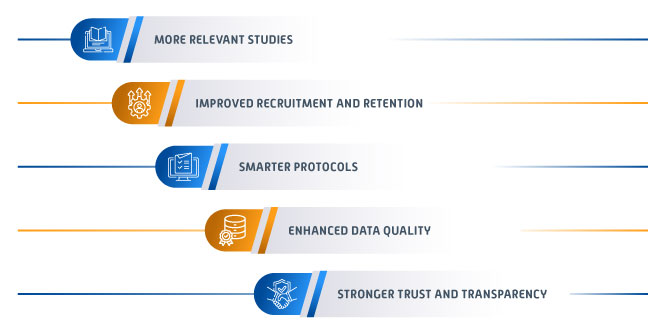Over the past few decades, the landscape of clinical trials has undergone significant changes. But perhaps nothing has been more transformative than the shift from passive patient participation to active partnership. What began as a greater awareness of the patient’s voice has now evolved into a full-scale movement.
This transformation is personal to me. With over 30 years in clinical research and a recent certification as an Expert Patient (Caregiver), I’ve come to understand that patient engagement is not just a trend. Still, it’s a necessity shaped by both professional experience and lived reality.
The Evolution of Patient Engagement
Traditionally, clinical trials prioritized scientific rigor and operational efficiency. Patients were largely passive, receiving information, following protocols, and contributing data. Today, we witness a meaningful evolution in patient engagement—progressing from individuals who are merely informed, to those whose feedback is sought yet not always heeded, and ultimately to empowered collaborators who actively shape the design and execution of clinical trials, becoming integral partners throughout the entire research journey.
The pandemic accelerated this shift, underscoring the need for more adaptable, patient-centered approaches, such as flexible scheduling, reduced site visits, and alternative data collection methods.
Implementing Patient Empowerment: Beyond Buzzwords
Empowerment isn’t just a feel-good concept; it’s a strategic imperative that is becoming a reality in everyday research by being engaged by sponsors in the following ways:
-
Early Involvement: Patients help shape research questions and define outcomes that matter most to them.
-
Regulatory Voice: Patients now have a seat at the table in regulatory discussions, helping ensure that assessments align with life experiences.
-
Protocol Co-Design: Studies that incorporate patient insights tend to be more practical and accessible.
-
Transparent Results: More emphasis is being placed on making results accessible and understandable, reinforcing trust and engagement.
The shift benefits all stakeholders. And, with the help of advancing tools, remote data gathering, digital communication, and virtual visits, it becomes easier for patients to participate on their terms. These changes support broader participation, particularly for individuals facing barriers related to geography, mobility, or time constraints. As silent enablers, the process becomes more natural to patients rather than forced.
Tangible Benefits of Patient-Empowered Clinical Trial
The move to patient empowerment and deeper engagement isn’t just philosophical; it delivers measurable results:

Regulatory Support for a New Paradigm
Global regulatory bodies are increasingly advocating for patient-inclusive research. Initiatives such as the FDA’s Patient-Focused Drug Development and the EMA’s Regulatory Science to 2025 call for systematic inclusion of patient perspectives throughout the development cycle. This regulatory encouragement signals that patient empowerment is not only beneficial but expected.
A New Standard: Ethical, Effective, Engaging
Empowered patients are redefining research. As someone who has stood on both sides, the challenge is no longer about whether we adopt this model, but how sincerely we do so. In partnership with patients, we unlock potential for trials that are more humane and more aligned with those they aim to serve.
About the Author
Francesca Farma
Director of Patient Engagement
Francesca has over 30 years of clinical experience. A certified EUPATI Expert Patient and active advocate, she designs patient-centered strategies for recruitment, diversity, and retention. Her expertise spans clinical operations, project management, and innovative technologies to improve trial participation. Recognized as a subject matter expert, she combines professional insight with lived experience to shape the future of patient engagement in clinical trials.
